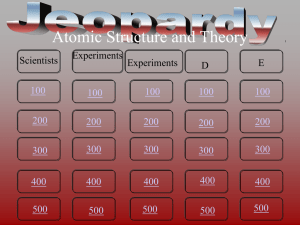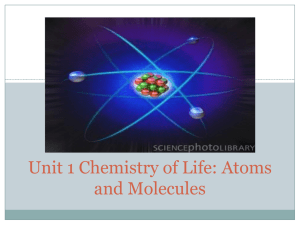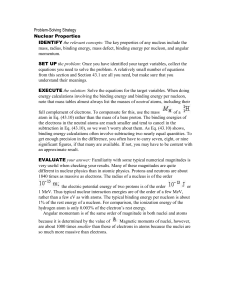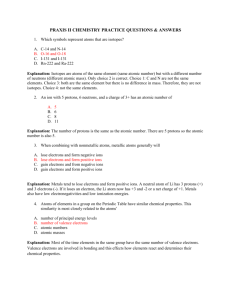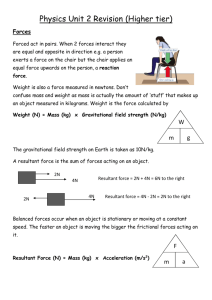ATOMS, MOLECULES, and IONS
advertisement
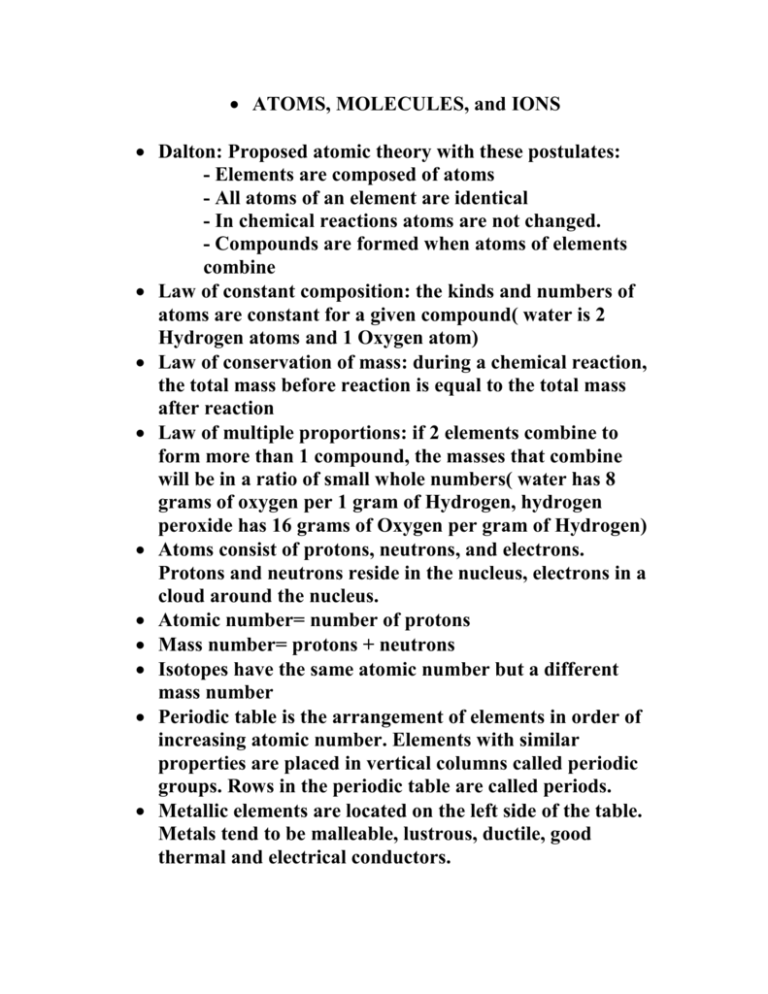
ATOMS, MOLECULES, and IONS Dalton: Proposed atomic theory with these postulates: - Elements are composed of atoms - All atoms of an element are identical - In chemical reactions atoms are not changed. - Compounds are formed when atoms of elements combine Law of constant composition: the kinds and numbers of atoms are constant for a given compound( water is 2 Hydrogen atoms and 1 Oxygen atom) Law of conservation of mass: during a chemical reaction, the total mass before reaction is equal to the total mass after reaction Law of multiple proportions: if 2 elements combine to form more than 1 compound, the masses that combine will be in a ratio of small whole numbers( water has 8 grams of oxygen per 1 gram of Hydrogen, hydrogen peroxide has 16 grams of Oxygen per gram of Hydrogen) Atoms consist of protons, neutrons, and electrons. Protons and neutrons reside in the nucleus, electrons in a cloud around the nucleus. Atomic number= number of protons Mass number= protons + neutrons Isotopes have the same atomic number but a different mass number Periodic table is the arrangement of elements in order of increasing atomic number. Elements with similar properties are placed in vertical columns called periodic groups. Rows in the periodic table are called periods. Metallic elements are located on the left side of the table. Metals tend to be malleable, lustrous, ductile, good thermal and electrical conductors. Nonmetallic elements are located on the right hand side of the table. Nonmetals tend to be brittle, dull, and do not conduct heat or electricity well. The in-between elements are called metalloids. Molecules are the combination of 2 or more atoms. Each molecule has a chemical formula that describes what atoms are in the molecule and in what proportions. Molecular formulas give the actual number and types of atoms. The empirical formula gives relative number and types of atoms(lowest whole number ratio) Atoms are neutral( protons=electrons). If electrons are added or removed from an atom , ions are formed. Losing electrons creates a cation(positively charged). Gaining electrons creates an anion(negatively charged) When molecules lose electrons, polyatomic ions are formed(SO42- , NO3-) Group 1A will lose one electron; Group 2A will lose 2 electrons; Group 3A will lose 3 electrons. Group 6A will gain 2 electrons; Group 7A will gain one electron; Group 5A will gain 3 electrons. Naming Rules: 1. Cations formed from metals have the same name as the metal. Na+= sodium ion; If more than one cation can be formed, then the charge is parentheses. Cu+=copper(I); Cu2+=copper(II). Cations formed from nonmetals end in –ium. NH4+=ammonium ion 2. Anions end in –ide. Cl-=chloride ion 3. Polyatomic anions containing oxygen end in –ate or –ite(more oxygen uses –ate) NO3-=nitrate; NO2=nitrite 4. Ionic compounds are named cation then anion. BaBr2= barium bromide 5. In naming acids if the anion ends in –ide the acid ends in –ic; -ate becomes –ic; -ite becomes –ous 6. The most metallic element is usually written first.





